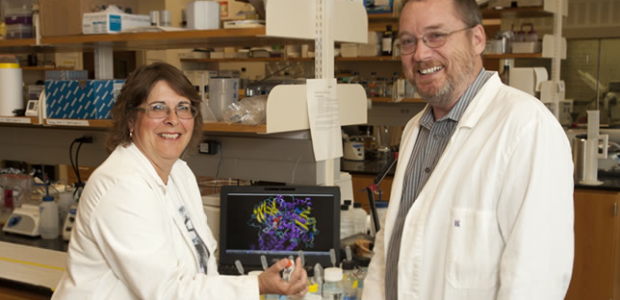Researchers are now able to use a 3D computer model which helps them to screen millions of chemo drugs. This brand new approach has been able to give researchers a fully movable view of the structure of a protein that is believed played a crucial role in chemotherapy failure.
For the longest time, medical researchers could only use still images of the proteins linked to recurring forms of cancer. They hoped that studying these images would provide them with an understanding of exactly why these proteins could make some chemotherapies fail.
Fortunately, staring at those still images will soon be a thing of the past. Currently, the biochemists at Southern Methodist University, a cancer research center in Dallas, are able to use a complete 3D model of the P-glycoprotein. This is the human protein which is believed to play a key role in causing chemotherapy failure in a number of recurring cancers. These SMU biochemists are using this 3D model to effectively screen more than 8 million potential drug compounds in the hopes that there will be at least one which can prevent this failure.
One of the biochemists, a Mr. John G. Wise, was interviewed in a school newspaper. He mentioned that this new approach has served as a really good “proof-of-principle”. The biochemists have shown that running these drug compounds through the computational model serves as an effective way to rapidly screen immense numbers of compounds. Using this new approach, they will be able to filter out a smaller number of compounds, which can then be tested in the wet lab. This process is also very economical in comparison to earlier methods.
Wise describes his supercomputer search in Biochemistry, the biophysical and molecular chemistry journal. His search has already yielded several hundred compounds which the biochemists have deemed “interesting.” He and his colleague, Pia Vogel, have already begun testing 30 of these “interesting” compounds in their lab. Incredibly, out of these 30 compounds, they have already found a few that can inhibit the P-glycoprotein!
Wise mentions that his team can currently screen around 40,000 compounds per day using the High Performance Computer at SMU. Unfortunately, even with this amazing computing power at hand, the odds are still stacked against any medical researchers trying to identify a drug compound that will actually work. We have seen other attempts, such as the use of nano-technology for cancer treatment, which provide hope in one day developing a cure.
This seems strange, given the fact that Wise and his colleague have already found a few compounds which can inhibit the protein. As Wise puts it, you could find 100 compounds that are “good inhibitors”, but 99 of those compounds might be too toxic to be used on patients. Wise has admitted that there are actually a number of things that could be wrong with the compounds: they could be too toxic, they might metabolize too quickly, or they may not be soluble enough to be acceptable for humans.
He maintains a positive outlook, and has stated that they are definitely on the right track. However, Wise would be blown away if one of the first several compounds they have tested turns out to be the one they are looking for. It’s like looking for a needle in an incredibly large haystack, but with a computing rate that powerful, (40,000 compounds a day!) they might just find that needle after all.

